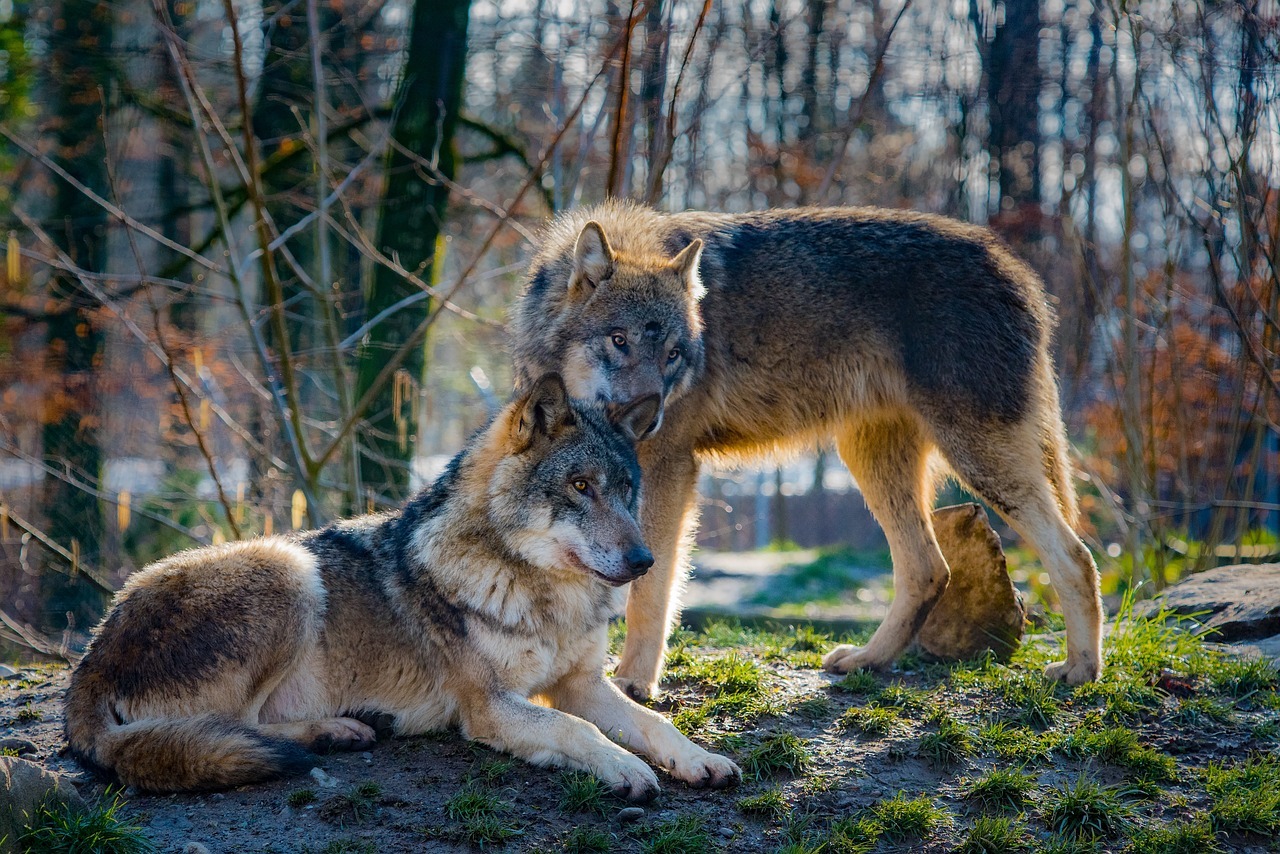The Science Behind Dominance Theory in Dogs: Fact or Fiction?

Are dogs truly pack animals driven by dominance, as many believe? Or is dominance theory just a misguided concept that has been widely misunderstood and perpetuated over the years? In this article, we delve into the science behind dominance theory in dogs to separate fact from fiction.
Dominance theory suggests that dogs exhibit a hierarchical pack structure and strive to assert dominance over other pack members, including humans. Proponents of this theory advocate for a more authoritarian approach to dog training, emphasising the need for owners to establish their dominance as the “alpha” in the relationship.

However, recent research in animal behaviour and psychology challenges this traditional belief. Scientific studies indicate that dogs don’t operate solely based on dominance hierarchies. Instead, their behaviour is influenced by a variety of factors, including individual personalities, socialisation, and training methods.
By exploring the latest scientific evidence, we aim to shed light on the complexity of dog behaviour and provide a more nuanced understanding of dominance theory. Join us as we uncover the truth about dominance theory in dogs and explore the most effective and humane ways to train our furry companions.
The history and origins of dominance theory
Dominance theory actually has its roots in the study of wolf behaviour. The word alpha was first introduced to the published world of popular dog training by David Mech in 1970, whose work was not based on his own scientific studies, but the citation of Rudolph Shenkel, who had published his WOLF research in the 40s. And what was Shenkel’s work based on? The captive wolf study went something like this…

Imagine a scientist visits 25 countries, plucks a human being from each of them, against their will, and drops them all into a foreign and inescapable environment together without warning or explanation. These human beings share no language, no shared culture or community and are inherently traumatised by recent events. Think this sounds a lot more like The Hunger Games, than real life? Well Shenkel’s wolves felt exactly the same.
To reasonably expect that these people (or wolves) are going to behave calmly, objectively and civilly towards one another in this set up is incredibly unrealistic – rather it’s far more likely that there’s going to be a massive display of stress-induced resource hoarding, aggression and violence.
This was exactly the situation that Shenkel’s wolves found themselves in and so that’s exactly how Schenkel’s wolves behaved. If aliens landed in the centre of this hypothetical human experiment and determined that normal human society and familial relationships operated akin to what they saw before them, it would sit in stark contrast to an alien landing in your family home and observing how you engage with your children, your parents and your friends on a day-to-day basis. And this is exactly what Mech went on to discover, over the next 40 years of researching WILD wolves in their NATURAL habitat. In fact, in 13 years of studying a single wolf pack structure, not once did he ever observe a single contest of dominance. Mech himself refuses to even use the term alpha anymore, citing that wolves in the wild live in family units, with parents leading the pack through cooperation and mutual respect, rather than dominance.

This misunderstanding of wolf behaviour has led to the misinterpretation and misapplication of dominance theory in dog training. Instead of recognizing the unique social dynamics of dogs, many dog owners have mistakenly believed that they need to assert dominance over their pets to establish control.
The key concepts of dominance theory
Dominance theory in dogs revolves around the idea that dogs are constantly striving to be the “alpha” in their pack, which includes their human family. Advocates of this theory believe that dogs should be submissive to their owners and that any sign of disobedience or challenge should be met with immediate correction or punishment.
Central to dominance theory is the concept of “alpha rolls,” where owners physically force their dogs onto their backs as a show of dominance. However, this approach is not only ineffective but also potentially harmful, and certainly dangerous. It can lead to fear, anxiety, and aggression in dogs, as they perceive such actions as threatening and invasive.
Furthermore, dominance theory fails to account for the individuality of dogs and their unique personalities. The truth is, each dog is different, with distinct temperaments and preferences. Treating all dogs as if they are driven by dominance undermines their individuality and can hinder their training and development.
Scientific evidence against dominance theory
In recent years, scientific studies have provided compelling evidence against dominance theory in dogs. One study conducted by Dr. Barry Eaton and his team at the University of Nottingham found that dogs do not exhibit consistent dominant or submissive behaviours. Instead, their behaviour is influenced by a complex interplay of genetic, environmental, and social factors.
The study involved observing a large sample of dogs in various social contexts, including interactions with other dogs, humans, and in their home environments. The researchers found that dogs displayed a wide range of behaviours, with no clear dominance hierarchy emerging. Instead, they observed that dogs were more likely to engage in cooperative behaviours and form social bonds based on trust and mutual respect.
Another study conducted by Dr. Monique Udell at Oregon State University focused on the effects of training methods on dog behaviour. The research showed that dogs trained using positive reinforcement and reward-based methods exhibited more obedient and cooperative behaviour compared to dogs trained using dominance-based methods.

These studies and others like them have challenged the notion that dogs are driven by dominance and require an authoritarian approach to training. Instead, they highlight the importance of understanding dogs as individuals and using humane and effective training methods based on positive reinforcement.
Alternative theories on dog behaviour and training
As dominance theory has been called into question, alternative theories on dog behaviour and training have emerged. One such theory is the “relationship-based” approach, which emphasises building a strong bond between dogs and their owners through trust, communication, and positive reinforcement.
This approach recognizes that dogs are social animals that thrive on positive interactions and cooperation. By focusing on strengthening the bond between owners and their dogs, relationship-based training aims to create a harmonious and mutually respectful partnership.
Another alternative theory is the “cognitive-emotional” approach, which explores the cognitive and emotional processes that shape dog behaviour. This theory recognizes that dogs have complex cognitive abilities and experience a range of emotions similar to humans.
By understanding the cognitive and emotional aspects of dog behaviour, trainers can tailor their methods to meet the individual needs of each dog. This approach promotes a deeper understanding of dogs as sentient beings and encourages empathy and compassion in training.
The dangers of applying dominance theory in dog training
Applying dominance theory in dog training can have serious consequences for both dogs and their owners. The use of aversive techniques, such as physical punishment or alpha rolls, can lead to fear, anxiety, and aggression in dogs. These methods erode the trust and bond between dogs and their owners, making training more challenging and potentially damaging the dog-owner relationship.
Furthermore, dominance-based methods often fail to address the underlying causes of undesirable behaviours in dogs. Instead of understanding the root of the behaviour and providing appropriate training and guidance, dominance theory focuses on exerting control through punishment. This approach does not address the emotional needs of dogs and can exacerbate behavioural issues.
In addition, dominance theory can perpetuate a negative cycle of fear and aggression. Dogs that are subjected to punishment or forced submission are more likely to exhibit fearful or aggressive behaviours as a defence mechanism. This not only puts the dog and its owners at risk but also perpetuates the misconception that certain breeds or individual dogs are inherently aggressive or dominant.
Positive reinforcement and rewards-based training methods
In contrast to dominance-based methods, positive reinforcement and rewards-based training methods have been shown to be more effective and humane. These methods focus on rewarding desired behaviours with praise, treats, or play, rather than punishing unwanted behaviours.
Positive reinforcement encourages dogs to repeat behaviours that are rewarded, leading to faster and more reliable results in training. It also fosters a positive and trusting relationship between dogs and their owners, enhancing the bond and cooperation.
Rewards-based training methods also promote mental stimulation and engagement, as dogs actively participate in the learning process. By using rewards that are meaningful to the individual dog, trainers can motivate and inspire dogs to learn and perform desired behaviours willingly.
Understanding dog behaviour through a modern perspective
To truly understand dog behaviour, it is essential to adopt a modern and evidence-based perspective. This means recognizing that dogs are complex beings influenced by a variety of factors, including their genetics, early socialisation, and individual experiences.
Understanding dog behaviour from a modern perspective involves considering the dog’s emotional and cognitive needs. It requires empathy, patience, and a willingness to adapt training methods to suit the unique needs of each dog.
By focusing on positive reinforcement, rewards-based training, and building a strong bond based on trust and mutual respect, dog owners can create a harmonious and fulfilling relationship with their furry companions.
Debunking common misconceptions about dominance in dogs
Do dogs need leadership and guidance? Absolutely. Do dogs need to be physically dominated to be well-behaved? Absolutely not. As we have seen, physical punishment and dominance-based methods can have detrimental effects on a dog’s behaviour and well-being, whilst positive reinforcement and rewards-based methods have been proven to be more effective and humane in achieving desired behaviours.
It is also important to dispel the myth that dogs are constantly vying for dominance over their owners. Dogs do not have a desire to dominate humans; their behaviour is influenced by a complex interplay of genetic, environmental, and social factors, and they simply seek guidance, structure, and positive interactions. By providing clear communication, consistent training, and a nurturing environment, dog owners can foster a healthy and balanced relationship with their pets.
As our understanding of dog behaviour continues to evolve, it is important to stay informed and open-minded. By embracing evidence-based training methods and recognizing the individuality of dogs, we can provide them with the care, guidance, and love they deserve.





